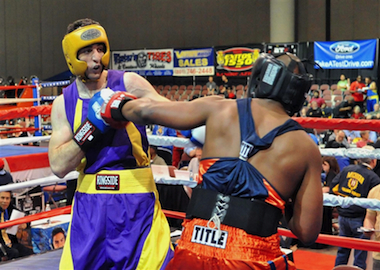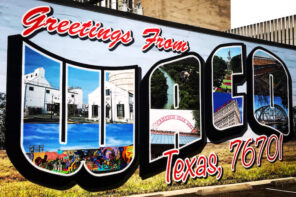Now that the Boston bombers have been identified—one killed and the other brother captured—the next question is why? Why did they do it, and did religion play a role?
As soon as it became clear that the Tsarnaev brothers were Muslim and that Tamerlan, the older of the two, had become pious in recent years, commentators began to point to religion as the culprit. Once again, they implied, an act of violence has occurred with the specter of radical Islam hovering in the background. Or so it may initially have appeared.
But I suspect the truth is more complicated than that.
The Boston case appears to be similar to many of the other lone wolf terrorist attacks in the United States in recent years. Before Boston, there was the December 2012 Newtown massacre by Adam Lanza at Sandy Hook Elementary School; the July 2012 movie theater shootings by James Holmes in Aurora, Colorado; the August 2012 attack on the Milwaukee Sikh Gurdwara by Wade Michael Page; the 2010 Times Square bombing attempt by Faisal Shahzad; and the 1996 Atlanta Olympic park bombing by Eric Robert Rudolph, to name a few.
Some of these were committed by Christians, some by Muslims, and some by those with no particular religious affiliation at all. In almost all cases, though, these have been instances where lonely, alienated individuals have raged against a society that they thought had abandoned them.
These lone wolf events are different from other instances in recent years where organized radical religious groups such as the Christian militia or Muslim jihadi organizations have plotted attacks and recruited participants to be involved in them. In the lone wolf cases, religious ideas, when they appeared at all, were more of an excuse than a reason for the violence.
The Boston incident seems to be a case in point. Though the details of the background and motives of the Tsarnaev brothers aren’t entirely clear, religion in the Boston bomber case also seems to be a secondary aspect of their motivations. Like the other cases in recent years, it is an expression of the rage of angry young men.
Specifically, in the case of the Tsarnaev brothers, it is the expression of the rage of one angry young man assisted by his younger brother. It’s true that the surviving Tsarnaev, 19-year-old Dzhokar, did not appear to be either a loser or a loner; he was a likeable high school athlete who seemed to harbor little rage against anyone, much less towards society. But it’s also clear that he worshipped his older brother. Some describe him as following Tamerlan around “like a puppy.” So Dzhokar’s participation may have been due less to personal rage or religious ideology than to sibling pressure from Tamerlan, seven years his elder.
Then what about Tamerlan Tsarnaev? He was clearly a troubled young man. He had dropped out of college, was arrested for assaulting his girlfriend, was separated from the woman with whom he had fathered a child, was ineligible for US citizenship because of the assault record, and had abandoned his dream of becoming an Olympic boxer. Worse, he had no social support network. He told one colleague, “I don’t have a single American friend… I don’t understand them.” It was then that he began to be more deeply involved in radical religious and political ideas related to the family’s war-torn homeland of Chechnya.
The details of his connections to the separatist organizations and jihadi ideology that accompanies some aspects of the rebellious movement are yet to be revealed. But at least one Chechen rebel leader has proclaimed that Tamarlan had nothing to do with the rebel movement, that he was a product of America. According to the AFP, a statement posted on the websites of Chechen rebels noted that:
The command of the Vilayat Dagestan mujahedeen… declares that the Caucasus fighters are not waging any military activities against the United States of America… We are only fighting Russia, which is not only responsible for the occupation of the Caucasus, but also for monstrous crimes against Muslims.
Still, for Tamarlan the notion of being a part of a great battle seemed appealing.
Real wars can sound tremendously exciting to such people. The imagined wars of great religious conflict are more than exhilarating—offering the promise of opportunity, of playing an ennobling role within that cosmic war. Perhaps most directly, such imagined wars provide a justification for doing something destructive to the very society that they think has shunned them.
Hence the defense of a religion provides a cover for violence. It gives moral license to something horrible that the perpetrators had longed to do, to show the world how powerful they really could be, and to demonstrate their importance in one terminal moment of violent glory. Religion doesn’t cause the violence, it’s the excuse for it.
One does not need religion to do this, of course. After all, Adam Lanza shot up the Newtown School and John Holmes attacked the Aurora movie theater crowd without a nod towards religion.
But in the case of Atlanta Olympic Park bomber Eric Robert Rudolph and the Sikh Gurdwara attacker Wade Michael Page, their motivations appear to have included the defense of Christian society. Attempted Times Square bomber Faisal Shahzad and Tamerlan Tsarnaev both justified their acts of rage as a defense of Islamic society.
It’s not right, of course, to blame Christianity for the acts of angry young men who are Christian—even when they claim to be defending the Christian community. Similarly, Islam is not responsible for angry Muslims.
Sadly, by evoking faith as an element of their bloody rage they compound their crimes, making religion yet another victim of their awful violence.





